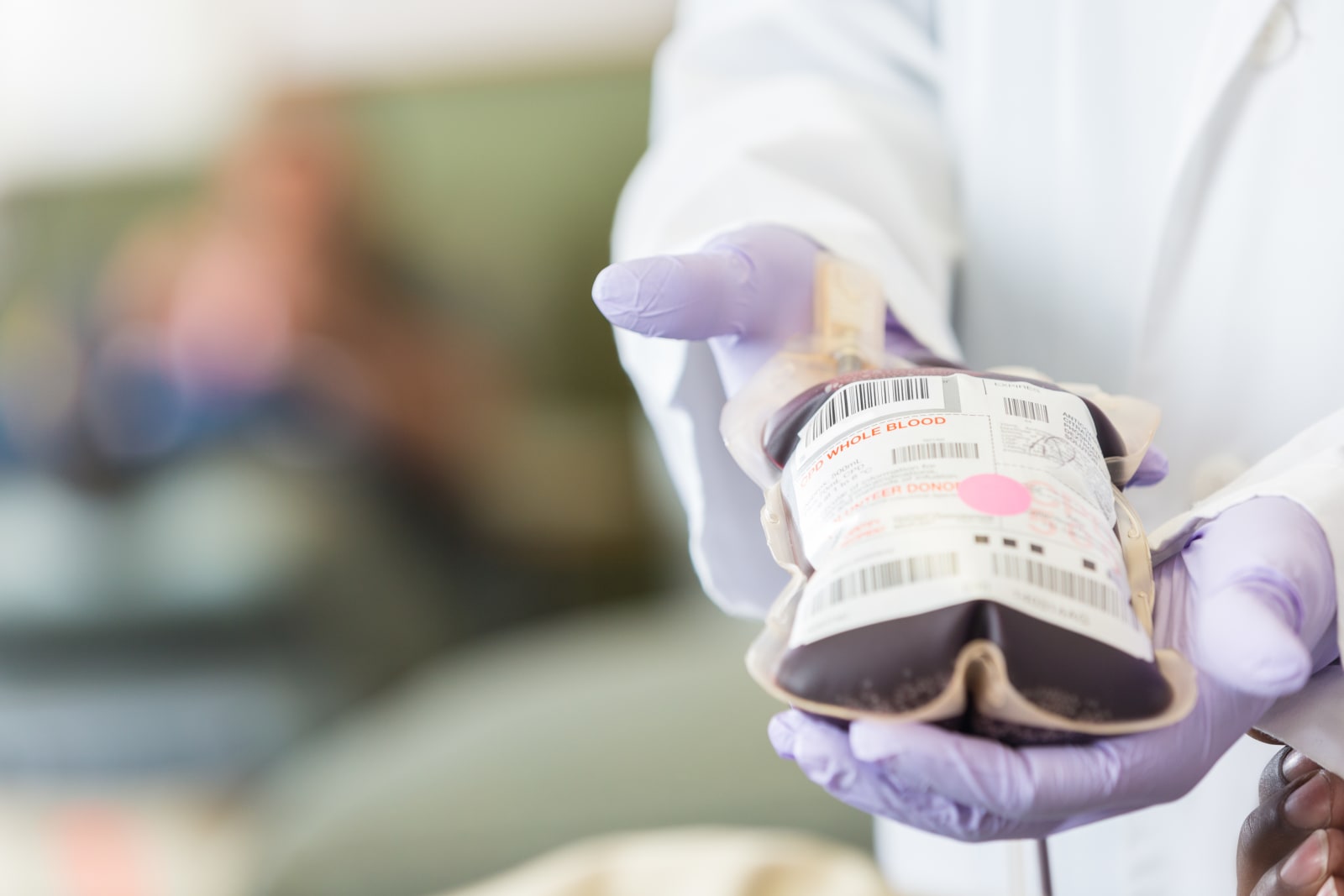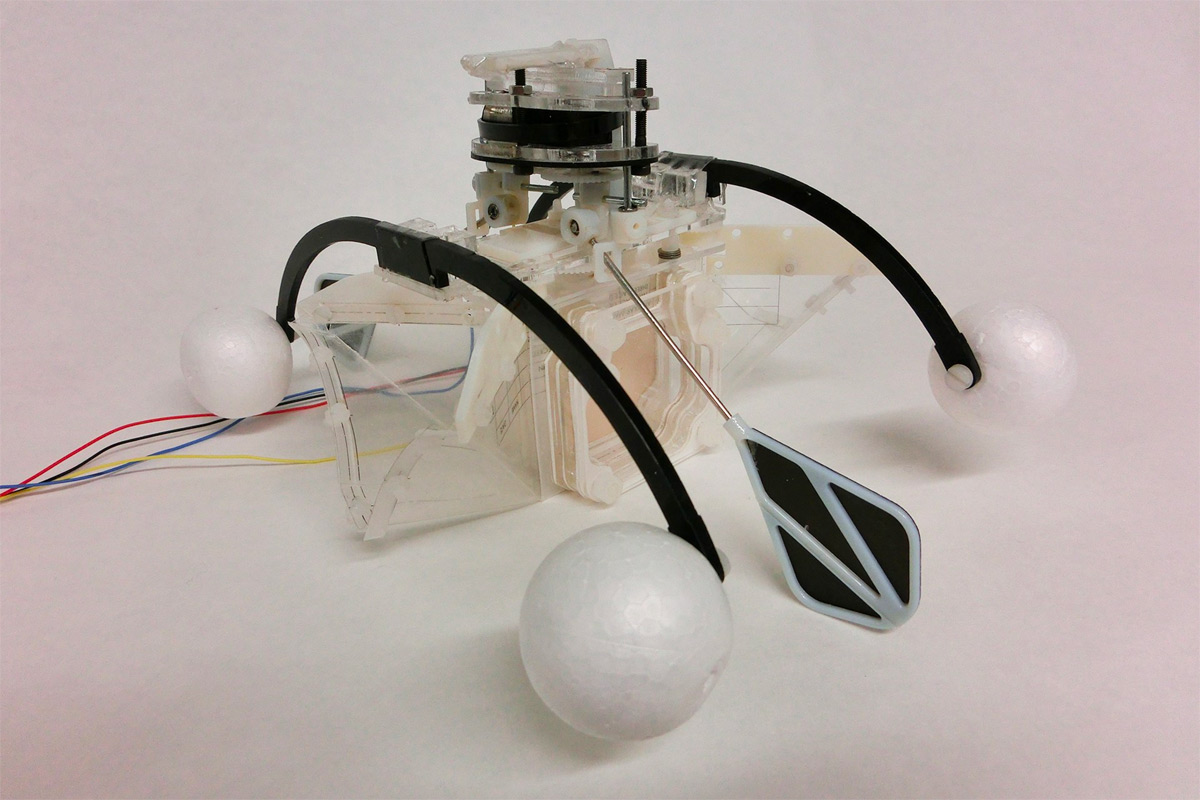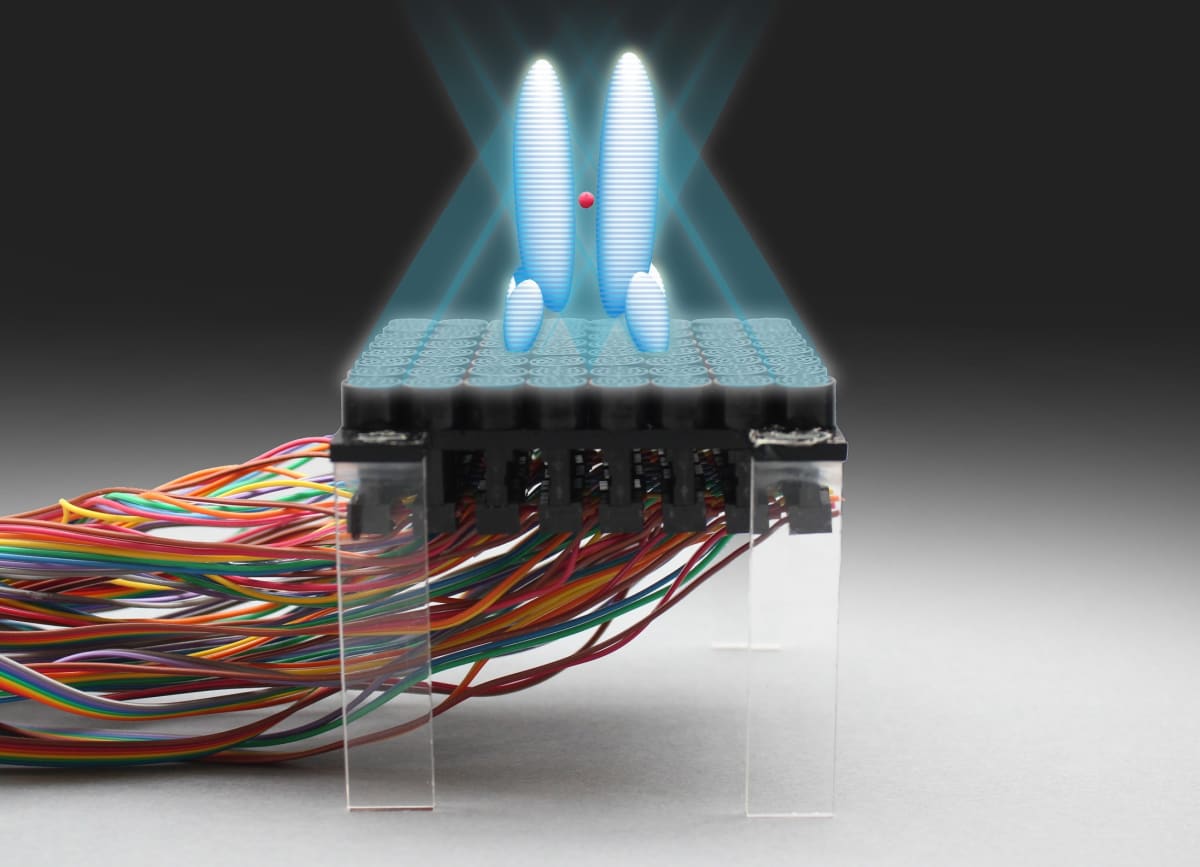Tag Archives: UniversityOfBristol
Mass-produced artificial blood is now a real possibility
 Doctors dream of having artificial blood always on hand, but the reality has usually been very different. While you can produce red blood cells in a lab, the current technique (which prods stem cells into action) only nets a small number of them at...
Doctors dream of having artificial blood always on hand, but the reality has usually been very different. While you can produce red blood cells in a lab, the current technique (which prods stem cells into action) only nets a small number of them at...
ICYMI: Smart coats, robot whiskers and vaporizing lasers
Rowing robot powers itself by gulping dirty water
 One day, you might see robots that not only survive in hazardous environments, but thrive in them. University of Bristol researchers have built Row-bot, a swimming robot that powers itself by feeding on dirty water. Its paddle both propels it forwa...
One day, you might see robots that not only survive in hazardous environments, but thrive in them. University of Bristol researchers have built Row-bot, a swimming robot that powers itself by feeding on dirty water. Its paddle both propels it forwa...
British scientists create a ‘tractor beam’ of ultrasonic sound
 A team of researchers from the Universities of Bristol and Sussex have developed the world's first functioning sonic tractor beam able to operate outside of a lab environment. The device uses 64 miniature speakers to generate high-amplitude, ultras...
A team of researchers from the Universities of Bristol and Sussex have developed the world's first functioning sonic tractor beam able to operate outside of a lab environment. The device uses 64 miniature speakers to generate high-amplitude, ultras...
Bristol physicists working to bring quantum cryptology to our phones
It's no secret that our phones are often vulnerable to the occasional malicious hack, no matter how much we believe our passwords to be secure. But what if the encryption methods we used were based on the laws of physics instead of just mathematical formulas? The answer might just lie in quantum cryptology or quantum key distribution, which uses photon modification to encode and transmit data. However, the technology has typically required gear only found in top laboratories. Both sender and recipient need to have a source of those photons, the equipment has to be perfectly aligned and the encryption tends to be highly susceptible to noise.
Yet, Jeremy O'Brien and his physicist cohorts from the University of Bristol might have come upon a mobile-friendly solution. Their proposed method only requires the transmitting party to have the appropriate photon-sending equipment while the recipient needs just a simple device -- say, a phone -- to change them and send the information back. Called "reference frame independent quantum key distribution" or rfiQKD, the technique is robust enough to not rely on proper alignment and is apparently able to withstand a high level of noise as well. In a recent paper submitted to arXiv.org, O'Brien and his co-authors state that "the results significantly broaden the operating potential for QKD outside the laboratory and pave the way for quantum enhanced security for the general public with handheld mobile devices." While we're not sure if the method will solve all our security woes, it's certainly a start. If you feel you're able to grok the science, head on over to the source for more details on the team's findings.
Source: arXiv
Researchers wrangle microscopic particles with sonic lasso
When you think about it, scientists and cowboys have a lot in common. Both are frontiersmen of a sort, both wear clothes that make them easy to identify and now they both count lassos among their essential tools. Researchers at the University of Bristol and the University of Dundee have wrangled small particles and cells by using a sonic (or ultrasonic) vortex. The whirl of sound waves allowed the teams to catch, move and orient microscopic particles, all without actually contacting them physically, which makes the solution ideal for handling delicate material. Professor Bruce Drinkwater from Bristol even suggested it could one day be used to assemble human tissue (custom assembled livers, anyone?). The sonic lasso is quite a bit more complex and less portable than its rope-based cousin, involving a circular device with 16 sources of acoustic waves. If you're looking for more technical details you'll find a link to the recently published paper titled, Dexterous manipulation of microparticles using Bessel-function acoustic pressure fields at the source.
Via: Phys.org
Source: University of Bristol
Environmentally friendly robots will feed the flowers they trample
Dr Jonathan Rossiter, a senior lecturer at the University of Bristol's Department of Engineering and Mathematics, has snagged a two-year research grant of over £200,000 to develop robots that decompose once their mission if complete. This means instead of our automaton friends rusting away, devoid of purpose, they could return gracefully (and more importantly non-toxically) back to mother earth. Not only would this be a boon to the environment, but scientists would no longer need to track and retrieve their mechanical progeny once it reached the end of its usable life, further sparing resources and allowing mass deployment. At least we know, when the day comes, the planet won't be harmed.
Environmentally friendly robots will feed the flowers they trample originally appeared on Engadget on Wed, 02 May 2012 09:23:00 EDT. Please see our terms for use of feeds.
Permalink PhysOrg |
PhysOrg |  University of Bristol | Email this | Comments
University of Bristol | Email this | Comments 

